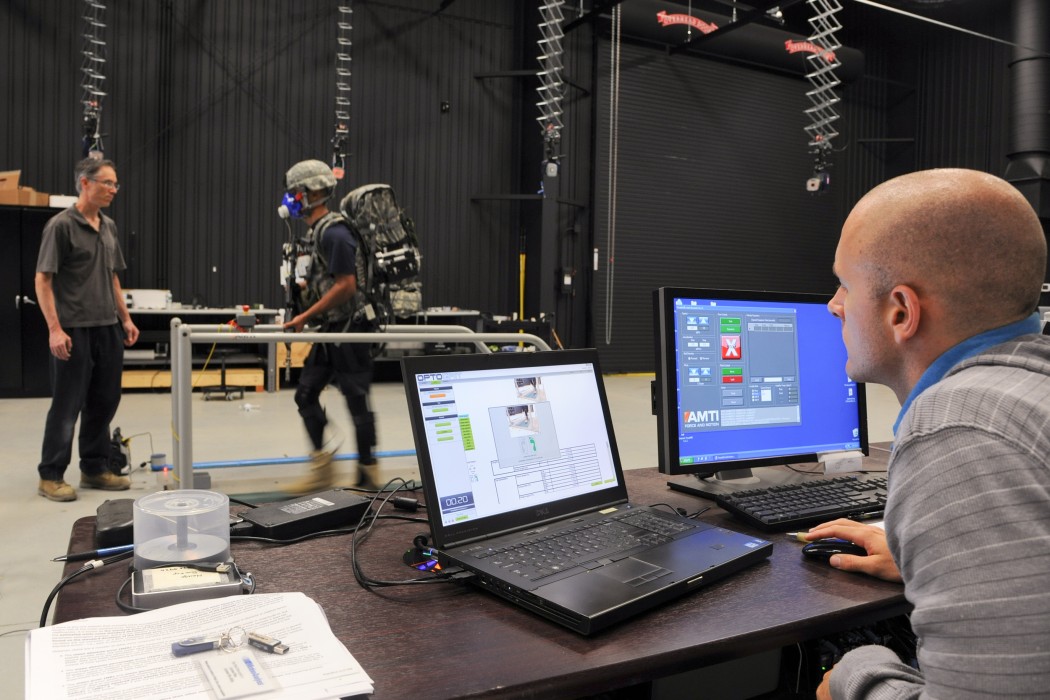As medical researchers seek a cure for paralysis, cutting-edge robotic exoskeletons offer the promise of mobility.
Advances in robotics have allowed paraplegics and quadriplegics alike to walk again, thanks to the assistance of wearable exoskeletons. This technology, now available for less than $100,000, has rapidly emerged in the past decade and is making incredible strides, despite its infancy. “I’m like Forrest Gump. I just like walking,” says Ricky Chang, who became quadriplegic after a BMX accident in 2009. With the help of Indego, an exoskeleton designed at Vanderbilt University, Tennessee, Ricky was able to walk 826 steps during his physiotherapy. “It’s hard to describe the feeling, but I definitely can’t stop smiling when I use it,” he adds.
Chang’s story is one of thousands, as researchers worldwide work towards a competitive alternative to wheelchairs. Several projects similar to Indego have been developed, such as ReWalk, EksoGT, and UC Berkley’s Phoenix, all of which have made a mark in rehabilitation clinics throughout North America. Generally, the suits are controlled through buttons in special crutches, although therapists can control them as well, using a smart-phone app. “I have to shift my weight onto one foot and lean forward and once the suit recognizes that I’m in the correct position, it steps,” explains Jillian Harpin, who has been paraplegic for less than a year. Despite the slow pace of roughly one-and-a-half kilometers per hour, the technology amazes her. “I get to walk by all my old nurses and they’re astounded by how tall I am”, she adds.
Currently, these exoskeletons are primarily used in rehabilitation and physiotherapy. Though remarkably sophisticated, exoskeletons have yet to become a practical replacement to wheelchairs. Devices that have been approved by the FDA are not recommended for use on stairs or curbs, and given their relatively slow pace, they are outclassed by wheelchairs in nearly all practical situations. “If you need 10 minutes to walk to the bakery 300 feet away in your exoskeleton that takes five minutes to put on, you will probably use the wheelchair instead,” jokes Volker Bartenbach, an exoskeleton researcher at ETH Zurich. However, these suits are much more than gimmicky feats of engineering. Being able to stand upright improves bone density, breathing, and reduces the risk of injures from prolonged immobility, such as bedsores.
Compared to developments in robotics, medical research for paralysis reduction treatments have been held back by lack of funding in addition to controversy surrounding stem cell research. “The road to finding a stem cell cure is paved with many challenges that will take time to overcome,” states the Canadian Stem Cell Foundation. “There are as yet few clinical trials evaluating the safety and feasibility of using stem cells for treating spinal cord injury but the wealth of information generated from labs around the globe is converging to help with the transition from basic research to the clinic.” Last March, such a treatment helped Kris Boesen, paralyzed from the neck down in a car accident, regain use of his hands and arms. However, full recovery from paralysis is not yet possible, due to the incredible difficulty of neuron repair and regeneration.
While researchers work tirelessly to discover ways to reverse nerve damage, perhaps robotics will offer improvements in mobility and quality of life in the meantime. Though restoring full control of one’s body would be an ideal solution, it appears that the progress in medical research will move at a slower rate than that of robotics. Given the incredible progress regarding exoskeletons over the past five years, one can only imagine the capabilities of the technology a decade from now. The pace is so startling that the Japanese super-company Panasonic predicts widespread exoskeleton use for all people, abled and disabled alike, within fifteen years. Beyond simply restoring function, the suits of the future may exceed our biological capability, allowing us to lift heavier, run faster, and jump higher. With improvements in neural technology, people will be able to control these exoskeletons with their minds, essentially eliminating the need for fully functional limbs altogether.
Though the technology is in its infancy, the future of robotics offers the hope of a better quality of life for those with spinal injury and disease. As technology improves, so too will the price tag and ease of use. “When I watched Jillian stand and take her first steps in the Ekso suit, my memory took me back 23 years to seeing her walk for the first time as an infant,” recalls Bill Harpin, Jillian’s father. “You want to wake up and have everything all better, but when you do it isn’t. My dream is that through a lot of hard work and technology, Jillian will not only walk but run.”








